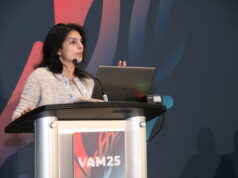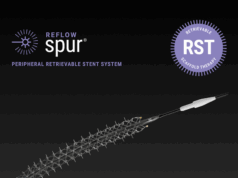
A study which benchmarked results from prospectively collected Vascular Quality Initiative (VQI) data for patients who have undergone peripheral vascular interventions (PVI) for chronic limb-threatening ischaemia (CLTI) has found that patients in Singapore “fared worse” than patients in the USA, despite comparable technical success rates. These results were published in the Journal of Vascular Surgery (JVS).
The retrospective review conducted by Joel Jia Yi Soon (Singapore General Hospital, Singapore) et al, used the Society for Vascular Surgery (SVS) VQI registry database from the first, and at present only, VQI centre in Asia. The researchers reviewed the database to identify patients with CLTI who underwent endovascular revascularisation between July 2019 and April 2024, comparing these data with those collected from participating centres in the USA.
A total of 2,862 procedures were identified from Singapore General Hospital (SGH) and were benchmarked against 129,347 procedures from 406 centres in the USA and Canada. The researchers note that the average age of patients in their cohort was younger than those in the USA, reported as 68.8 years versus 69.6 years. Their patient cohort also had significantly lower body mass index (BMI) and a lower proportion of patients with a history of smoking.
Soon et al state that their cohort had a higher burden of comorbidities, including diabetes mellitus, end-stage renal disease, and cardiac disease, and presented with advanced Wound, Ischemia, and Foot Infection (WIfI) stages. The investigators add that their patients had more heavily calcified and longer (14.8cm vs 6cm) diseased vessels with higher prevalence of multi-level (87% vs 54.6%), infrapopliteal (52.6% vs 38.9%) and inframalleolar (9.6% vs 2.4%) disease.
Technical success and symptom improvement between the SGH VQI centre and those in the USA were comparable, reported as 92.7% versus 93%, and 39.1% versus 40.4%, respectively. However, one-year mortality (28.9% vs. 25.1%) and major amputation rates (13.3% vs. 7.8%) were significantly higher in the Singapore cohort.
The authors note that although their patients had improved short-term outcomes despite more advanced disease and comorbidities, they experienced worse long-term outcomes. They call for further research to investigate the underlying causes of these discrepancies. The study highlights that since 2019 when SGH was enrolled in the PVI registry, they remain as the only VQI centre outside of North America. The authors emphasise that the majority of VQI data on CLTI is based on North American patients, limiting the generalisability of findings to Asian populations.
“Enrolment of our centre in the VQI registry has been tremendously helpful in improving our understanding and management of our patients with CLTI via the standardisation of data collection, reporting of post-procedural outcomes and allowing for benchmarking against centres from the rest of the world,” the investigators write.
They hypothesise that differences in patient characteristics, disease morphology, and treatment approaches may explain the varying clinical outcomes between Asian and North American patients with CLTI undergoing endovascular revascularisation. The authors conclude that their findings offer valuable insights into improving treatment outcomes for Asian patients with CLTI.










